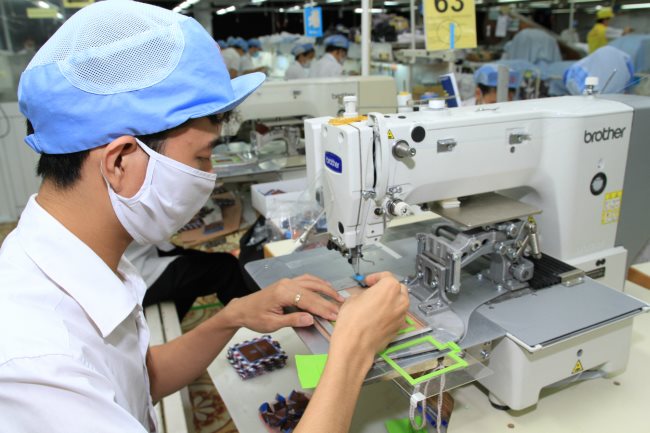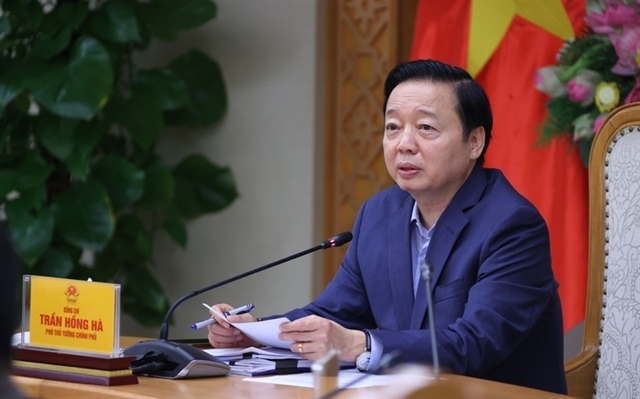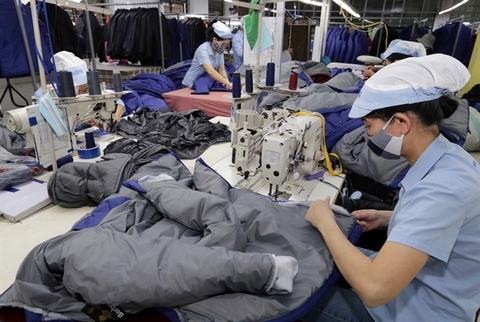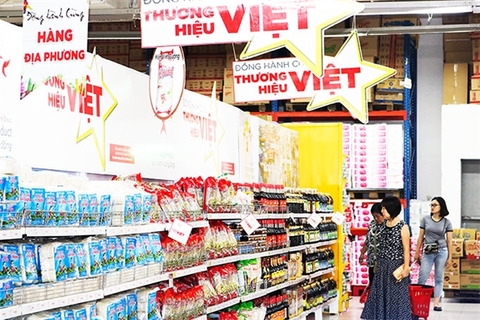“Made by Vietnam,” not “Made in Vietnam,” counts
“Made by Vietnam,” not “Made in Vietnam,” counts
Products “made in Vietnam” help the country secure employment and escape poverty. However, to stand firm and become a member of the group of strong countries, Vietnam needs to turn out many quality “made by Vietnam” products.

The import of foreign products to label “made in Vietnam” for sale on the local market is not only a deception but also a breach of consumer trust. Therefore, strong public reactions upon the detection of this fraudulent act are understandable. Consumers boycott not only the products detected for fraudulent labeling but also other products relevant to the brand of the enterprise concerned, such as the case of an electronic and electric appliances firm, with its “made in Vietnam” labeled products assembled from Chinese components.
The case, however, sparks controversies over a product made mostly from imported components but labeled “made in Vietnam.” Do management agencies have to build standards for goods eligible for “made in Vietnam” labeling? Do those standards really help boost domestic production?
What are “Vietnamese goods?”
There are three basic notions for Vietnamese goods: Products of Vietnam origin, products made in Vietnam, and products of Vietnam or products made by Vietnam.
Products of Vietnam origin are generally defined by management agencies in order to allow exporters of these products to enjoy preferential tariffs of importing countries. The criteria to define the Vietnam origin are stipulated in trade agreements with relevant countries. Vietnamese management agencies refer to these criteria to grant the certificate of Vietnam origin for products exported to partner countries.
There are many criteria and methods to define the origin. A product is generally certified for the origin from a country when it contains at least 30-40% of the local content. There are also separate regulations for a group of products. For example, agro products can only be certified for the origin from a country if they are farmed or cultivated there, and fisheries must be caught in the waters of that country. Garments and textiles must be made from local fabrics or yarns, or simply tailored at home, depending on specific agreements.
In sum, the identification of the Vietnam origin of a product is regulated strictly in international trade agreements Vietnam has signed. The origin certification is implemented by competent authorities and is solely for commercial purposes.
Meanwhile, how a product can be labeled “made in Vietnam” is not yet regulated by management agencies. In other countries, authorities generally pay attention to building standards for a product produced and circulated in the domestic market. By common practice, the labeling of the location of production shows the place where the product is finished before its market launch. This label only provides the information about the location where the product is completed, assembled and packaged into a finished product; it is not associated with commercial benefits, such as the certificate of origin. A product labeled “made in Vietnam” but failing to meet the ratio of local added value cannot enjoy preferential tariffs when it is exported to partner countries.
Not so significant
Previously when production was limited within the national boundary, goods were made almost entirely in the territory of a country. The words “made in” then implied more messages than the mere indication for origin of the goods. They represented the traditional production value, the technology strength and the like of the goods when they were exported to foreign countries. These quality goods would build the national brand for the country concerned.
However, with globalization, a product is the result of a supply chain from many countries and it is finished in any of those countries which the producer sees as appropriate. Consumers now pay attention mainly to the brand of the product, or, in other words, its producer. Users of smartphones like iPhone and Samsung are not much concerned about where they are made, whether in China or Vietnam. Likewise, Vietnam exports smartphones worth tens of billions of U.S. dollars annually, but the country is not seen as a smarphone producer but only as the world’s largest smartphone production base of Samsung.
In the case of an electronics company, it has imported almost all components from China to make its televisions. Suppose most of those components were made in the firm’s factories in China, consumers would not get so angry when they know that the televisions they believe being Vietnam goods are merely products assembled from imported components.
In the globalized economy, consumers are not so much concerned with where a product is made but with where it is marketed or who its producer is. The products consumed must meet standards in hygiene, safety and environment no matter whether they are locally made or imported. Multinationals usually have global quality commitments to ensure their products can enter any market regardless of where they are made. This explains why “imported” and “hand carried” American, Japanese and European goods are abundantly available both online and on the street though they are made in China, Vietnam or Indonesia.
Going forward, management agencies may issue regulations to determine how a product can be labeled “made in Vietnam.” However, as analyzed above, this complex and costly effort would have a spiritual rather than a commercial meaning and would not help much in creating more motivation for the development of domestic production. The essence of the global labor division today is the product is made by whom, not in what place. However in Vietnam, these two notions have been mixed over a long time.
Vietnam expects to “leapfrog” and implement “industrialization and modernization” with the support of external resources. Foreign investors in technology are offered incentives in hope of their technology transfer to Vietnam. However, foreign investors in electronics, motorbike and automobile production have quit the country without any technology transfer as soon as the tariff protection barriers have been lifted. After 30 years of costly efforts for localization, the automobile industry in Vietnam has yet to embrace the engine technology. The first Vietnam-brand sedan is going to take shape, with Vietnamese investment and labor but with entirely foreign technology and machinery. Those cars as well as televisions and smartphones mentioned above have high commercial value, create employment and contribute to the budget revenue, but they cannot be boasted as Vietnamese goods despite their large revenue and “made in Vietnam” labeling.
Vietnamese football has struggled and failed in seeking the shortcut to glory through buying and naturalized foreign footballers. The achievement it enjoys today is the fruit of persistent, in-depth investment through socialization and professional training. The lesson from football success shows that the path to become an industrialized country must be based on the exploitation of the intellectual potential and creativity of society to master science and technology. “Made in Vietnam” products help Vietnam secure employment and escape poverty, but the country needs many quality “made by Vietnam” products to stand firm and become a member of the group of developed countries.




















